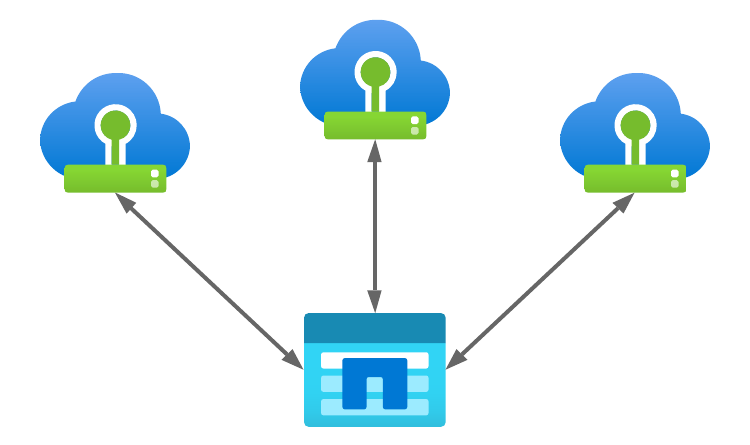Azure NetApp Files & Azure VMware Solution NFS Datastore
On the 7th of June 2022, Microsoft announced the public preview of Azure NetApp Files (ANF) support for hosting NFS datastores for Azure VMware Solution (AVS).
The AVS service is a VMware based solution that consists of physical dedicated nodes. These nodes contain compute, memory and storage and run VMware’s vSphere. The VMware vSphere hyper-visor allows customers to run guest Virtual Machines (VMs) in Azure in the same way they they do on-premises. As of writing, the minimum amount of nodes that can be deployed in three. Customers can then grow their deployment by adding additional nodes as required. This means, essentially, that customers can run their own private cloud in Azure, just like they do within their own data centre.
Why AVS?
I can already hear you saying, ‘Why would I move my workloads from on-premises to Azure and not use native Azure VMs?’. I completely agree with this train of thought, this was my initial response.
In a perfect world we would all love to rearchitect, refactor, redesign etc. when moving our services into public cloud. However, in the real world, companies simply do not have the time, resource, budget, desire as well as a number of other reasons they cannot do the cool/hip/trendy cloud native approach.
For example, there might be contractual or time driven reasons. Something like a data centre evacuation or managed service changes. We also need to remember that the VMware solution has been around for over two decades. Businesses have a huge investment in this product from a staff and skills perspective.
The VMware solution is a tried and tested platform that is trusted by businesses the world over. Having the ability to meet those business requirements, maintain consistency and start the journey to public cloud adoption, makes AVS a very compelling option for many companies.
Why ANF?
Azure NetApp Files (ANF) is a Microsoft Azure first-party product that is delivered, billed and supported by Microsoft. Having the ‘NetApp’ name does sometimes confuse people, but it simply highlights that the underlining storage is NetApp technology. The important points to understand about ANF are that it Platform-as-a-Service (PaaS) offering. It delivers enterprise grade, high-throughput, low-latency network attached storage (NAS) on demand.
The NetApp technology that underpins ANF is what gives the service its industry leading performance. Having the capability to deliver up to 450,000 IOPs and throughput of 4.5 GiB/s combined with super-low latency is what makes ANF a class leader among native public cloud file services.
This is what makes ANF a perfect fit for hosting workloads such as SAP, Oracle, SQL, Azure Virtual Desktop & HPC. Currently, ANF supports AVS for guest operating systems (OS) mounts. As of last week, AVS customers can now leverage the low-latency, high-throughput capabilities of ANF.
This month, June 2022, NetApp celebrates its 30th Birthday. With three decades of experience in the storage industry, NetApp, has become a trusted partner for thousands of customers around the globe. In conjunction with Microsoft, NetApp produced ANF, which became generally available in May 2019. Since then, the ANF service has been constantly developed, with additional features and enhancements being added with a regular cadence. The most recent of which is the ability to host AVS NFS datastores.

Why AVS & ANF?
As mentioned above, Azure VMware Solution consists of physical nodes deployed in Azure. Each of those nodes contains CPU, RAM and storage. The storage is cluster-wide and managed with VMware vSAN. So, if a customer needed more storage, they need to add more nodes, but might not necessarily need the additional CPU and RAM. This is where Azure NetApp Files (ANF) comes to the fore.
ANF now has, in public preview, support for hosting NFS datastores for AVS. This additional feature means that customers can now leverage the high-throughput, low-latency capabilities of ANF to complement their AVS deployment. Support for NFS datastores decouples the storage requirement from the nodes, allowing customers to expand storage without purchasing extra nodes. This capability will have a huge impact on costs, additional AVS nodes come at a price.
Integrating ANF with AVS offers customers the ability to meet the requirements of those storage-intensive workloads. The high-throughput, low-latency of ANF far out-stretches the capabilities of the AVS inbox vSAN feature. The integration with AVS also helps to lower the total cost of ownership (TCO). Being able to scale storage and maintain performance, without adding more nodes, makes AVS and ANF the perfect match.
Summary
As I mentioned in the ‘Why AVS‘ section at the start of this article, lifting a VM from one data centre to another, in this case Azure, does not seem very modern in its approach. But as I also mentioned, customers might not have time or budget to rearchitect, refactor, redesign etc. The AVS solution makes it easy for customers to move to Azure, as is, and maintain familiarity and functionality of the VMware product. The ANF service, with its added ability to act as a NFS datastore, brings flexibility, scalability, high-throughput and low-latency storage that can scale to meet customer needs whilst optimising costs.
